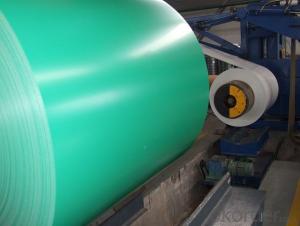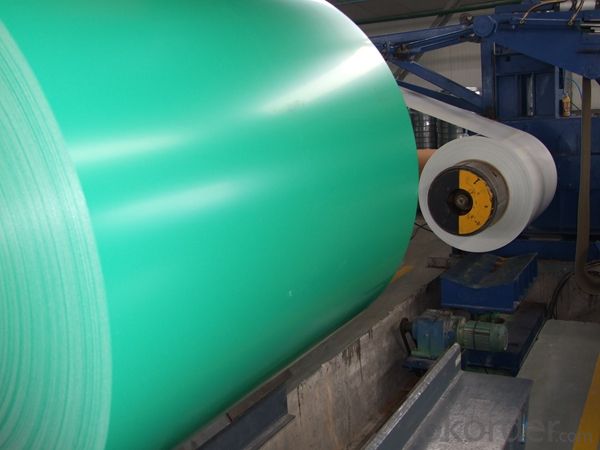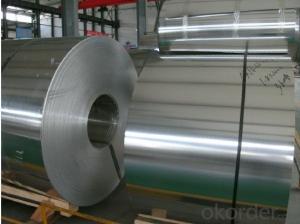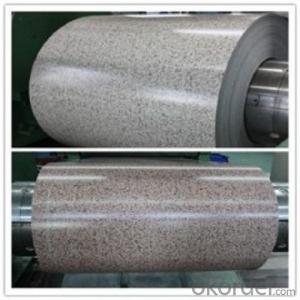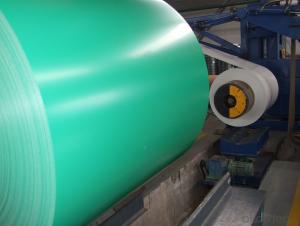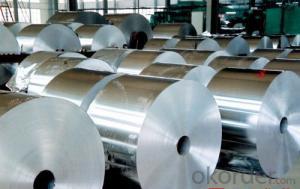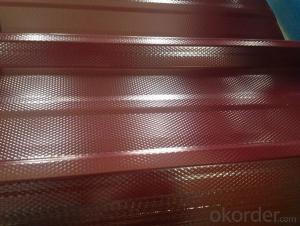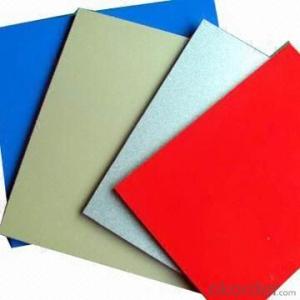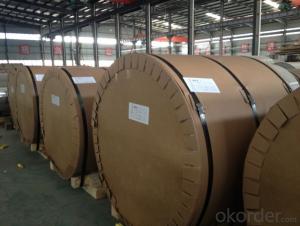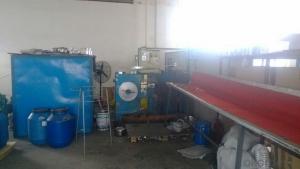Perforated Color Coater Aluminium Coil for ACP Panel Building
- Loading Port:
- Shanghai
- Payment Terms:
- TT OR LC
- Min Order Qty:
- 5 m.t.
- Supply Capability:
- 10000 m.t./month
OKorder Service Pledge
OKorder Financial Service
You Might Also Like
Specification
1. Specification of Color Coater Aluminium Coil for ACP Panel Building
Material | Alloy Aluminum 1XXX,3XXX,5XXX or customer nominated |
Temper | T3, T4, T5, T6 |
Surface | Anodize, electrophoresis, powder coating,PVDF coating, wood grain painting, matted, etc. |
Colour | Any colour based on Standard Germany RAL Mark |
Length | Coating 6.5 meters, Anodizing 6.5 meters, Mill finish 5 meters |
Press Machine | 500-4000 tons all together 64 press lines. |
Fabrication | 1. Windows and doors; 2. Drilling; 3. Bending; 4. Cutting; 5. etc. |
Certificate | ISO 9001 |
Moulding | 1. Using our moulds, no fee; |
2. Using customer drawing, opening mould, usually about 10~50 tons then the moulding can be refunded. | |
3. Mould cost is negotiable base on the order quantity | |
Capability | Annual output 100,000 tons |
2. Application of Color Coater Aluminium Coil for ACP Panel Building
(1).Interior: wall cladding, ceilings, bathrooms, kitchens and balconies, shutters, doors...
(2).Exterior: wall cladding, facades, roofing, canopies, tunnels,column covers , renovations...
(3).Advertisement: display platforms, signboards, fascia, shop fronts...
3. Feature of Color Coater Aluminium Coil for ACP Panel Building
Be free from Oil Stain, Dent, Inclusion, Scratches, Stain, Oxide Dicoloration, Breaks, Corrosion, Roll Marks, Dirt Streaks and other defect which will interfere with use
4. Certificate:
SGS and ROHS(if client request, paid by client), MTC(plant provided), Certificate of Origin(FORM A, FORM E, CO), Bureau Veritas and SGS (if client request, paid by client), CIQS certificate
5. Image of Color Coater Aluminium Coil for ACP Panel Building
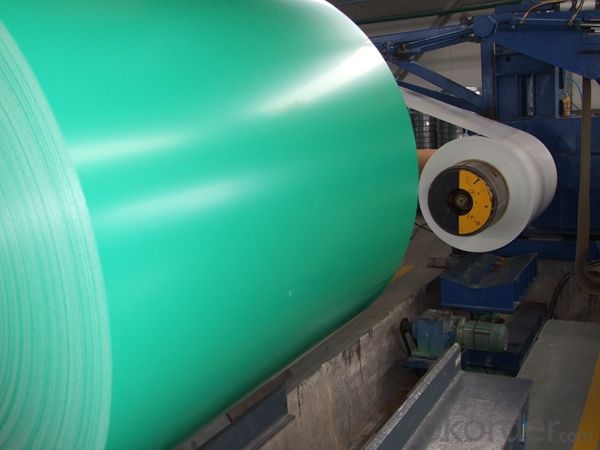
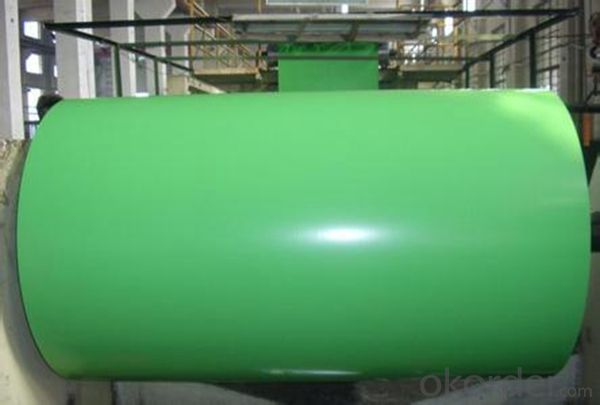
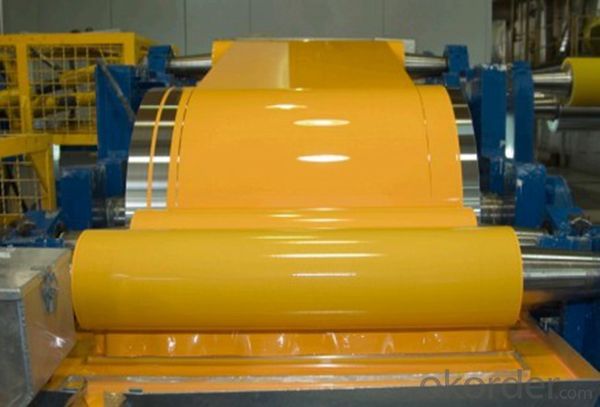
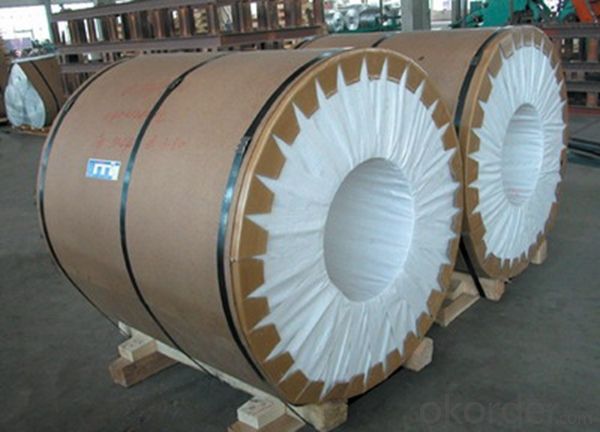
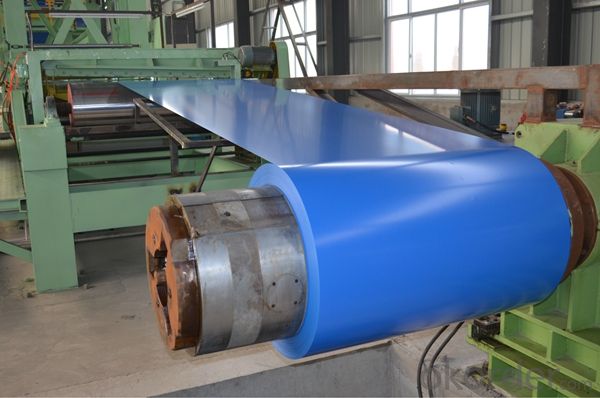
6. Package and shipping of Color Coater Aluminium Coil for ACP Panel Building
eye to wall
eye to the wall
with wood pallet (wooded case also available)
7. FAQ
1) What is the delivery time?
Dpends on actual order, around 20 to 35 days
2)What is the QC system:
We have QC staff of 20 persons and advanced equipment, each production is with MTC traced from Aluminum ingot lot.
3) What market do you mainly sell to?
Australia, America, Asia, Middle East, Western Europe, Africa etc
- Q: Are aluminum coils suitable for manufacturing cookware?
- Aluminum coils, indeed, prove to be appropriate for the production of cookware. The reason behind aluminum's popularity in cookware lies in its exceptional heat conductivity, which results in uniform heating and efficient cooking. Moreover, its lightweight and sturdy nature make it convenient to handle and long-lasting. Additionally, aluminum possesses resistance against rust and corrosion, making it the perfect choice for cookware frequently exposed to water and heat. Nevertheless, it is crucial to acknowledge that uncoated aluminum cookware might react with certain acidic or alkaline foods, leading to a metallic taste. To tackle this issue, numerous aluminum cookware manufacturers utilize non-stick coatings or anodized finishes to prevent food reactions and enhance the cookware's durability. All in all, aluminum coils serve as a suitable material for the manufacture of cookware, but it is imperative to consider the specific requirements and coatings necessary for various types of cookware to ensure safety and optimal performance.
- Q: I'm wondering if there is a resin/molding material that can withstand the heat of melted aluminum for casting parts. I know that sand casting is the 'norm' but is there anything else? I'd rather not have to pack sand every time I want to cast a part.Thanks!
- One common mold material for metal casting is plaster mixed with silica sand to give it more strength. It needs to be completely (like heated) dry before you use it, but it is actually more work than sand casting but it gives a better finish. There are some rubber materials which can withstand the heat of casting pewter, but the melting point of pewter is so much lower than aluminum that I am sure those won't work for aluminum. I think you are pretty much stuck with sand for the easiest method.
- Q: What are the different surface finishes available for aluminum coils?
- There are several different surface finishes available for aluminum coils, including mill finish, brushed finish, embossed finish, anodized finish, and painted finish.
- Q: Can aluminum coils be used in HVAC heat exchangers?
- Indeed, HVAC heat exchangers can make use of aluminum coils. The reason behind aluminum's popularity as a heat exchanger material lies in its exceptional thermal conductivity, lightweight nature, and resistance to corrosion. In air conditioning systems and heat pumps, aluminum coils are frequently employed to efficiently transfer heat between the refrigerant and the ambient air. Furthermore, the malleability and formability of aluminum coils facilitate the creation of intricate designs, resulting in enhanced heat transfer capabilities. All things considered, aluminum coils prove themselves as dependable and efficient options for HVAC heat exchangers.
- Q: Why the end of the aluminum coil will have a yellow spot?
- The reason may be that the manufacturer is not cleaned, and must be carefully cleaned before coating, or there may be paint fall off phenomenon.
- Q: Can aluminum coils be used in architectural mesh applications?
- Aluminum coils have the capability to be utilized in various architectural mesh applications. Widely used in construction and architectural projects, aluminum is a lightweight and adaptable material. It offers numerous advantages for architectural mesh applications, including a high strength-to-weight ratio, resistance to corrosion, and ease of installation. By manipulating aluminum coils, intricate architectural mesh designs can be formed in different shapes and sizes. These coils can be woven, welded, or expanded to produce diverse patterns and textures, granting flexibility in design and customization. Aluminum coil-based architectural mesh applications are present in a wide array of structures such as facades, partitions, ceilings, sunscreens, and safety barriers. The mesh provides benefits such as enhancing aesthetics, ensuring privacy, shading from the sun, enabling ventilation, and even offering security. Not only does aluminum possess aesthetic and functional qualities, but it is also a sustainable choice for architectural mesh applications. It is a highly recyclable material, and its lightweight nature reduces costs associated with transportation and installation, making it an environmentally friendly option. In summary, due to their durability, adaptability, and sustainability, aluminum coils are an exceptional option for architectural mesh applications. Whether it is for commercial, residential, or public spaces, incorporating aluminum mesh can enhance the visual appeal and functionality of architectural designs.
- Q: Are there any specific installation requirements for aluminum coils?
- Yes, there are specific installation requirements for aluminum coils. When installing aluminum coils, it is important to consider a few factors. Firstly, it is crucial to ensure that the coils are properly supported and secured during installation. Aluminum coils can be quite heavy, so adequate support is essential to prevent sagging or damage. This may involve using appropriate brackets or support structures to ensure the coils are securely mounted. Secondly, it is important to consider the location and environment where the coils will be installed. Aluminum coils are often used in HVAC systems, and it is crucial to ensure that the installation area is free from any corrosive substances or chemicals that could potentially damage the coils. Additionally, proper ventilation should be provided to prevent any buildup of heat or moisture, which can affect the performance and lifespan of the coils. Furthermore, it is essential to follow the manufacturer's guidelines and recommendations for installation. This may include specific instructions regarding the type of fasteners or connectors to use, proper spacing between coils, and any other specific requirements for the particular aluminum coil being installed. Adhering to these guidelines will ensure the optimal performance and longevity of the coils. Lastly, it is highly recommended to have the installation of aluminum coils carried out by a professional who is experienced in handling and installing these components. This will ensure that the installation is done correctly, minimizing the risk of any issues or damage that may arise from improper installation. In summary, specific installation requirements for aluminum coils include proper support, consideration of the installation environment, adherence to manufacturer guidelines, and professional installation. Following these requirements will help ensure the optimal performance and longevity of the aluminum coils.
- Q: Are aluminum coils suitable for marine environments?
- Yes, aluminum coils are suitable for marine environments. Aluminum has excellent corrosion resistance properties, making it a popular choice for marine applications. It forms a protective oxide layer that prevents further corrosion, making it ideal for withstanding the harsh saltwater and humid conditions found in marine environments. Additionally, aluminum coils are lightweight, durable, and easy to maintain, making them a reliable option for marine applications.
- Q: How are aluminum coils processed for surface preparation?
- To ensure proper adhesion of coatings, improve corrosion resistance, and enhance overall appearance, various surface preparation processes are carried out on aluminum coils. These processes typically include cleaning, degreasing, and etching. To begin with, the coils undergo a cleaning process to eliminate any dirt, dust, or contaminants. This can be achieved through either mechanical or chemical methods. Mechanical cleaning involves the use of brushes, scrubbers, or high-pressure water spray to physically remove impurities from the surface. On the other hand, chemical cleaning involves the application of mild alkaline or acidic cleaning agents that dissolve and eliminate contaminants. Following the cleaning process, the coils are degreased to eliminate any remaining oils or greases. This can be done using solvents or an alkaline degreasing process. Solvent-based degreasers are applied to the coil surface, allowing them to dissolve and remove any oil or grease residues. Alternatively, alkaline degreasing involves immersing the coils in an alkaline solution that reacts with the grease, resulting in the formation of soap that can be easily rinsed off. Once the coils have been cleaned and degreased, they may undergo an etching process to enhance surface roughness and promote better adhesion of subsequent coatings. Etching can be carried out using chemical or electrolytic methods. Chemical etching involves immersing the coils in an acidic solution that removes a thin layer of aluminum oxide from the surface, creating a roughened surface. On the other hand, electrolytic etching utilizes an electrical current to remove the oxide layer. After the surface preparation steps, the aluminum coils are typically rinsed with water to remove any residual cleaning or etching chemicals. Subsequently, the coils are dried to ensure a clean and dry surface, ready for the application of coatings or further processing. In conclusion, the surface preparation of aluminum coils involves a combination of cleaning, degreasing, and etching processes to achieve a clean, smooth, and properly prepared surface for subsequent treatments.
- Q: Are aluminum coils suitable for aerospace applications?
- Yes, aluminum coils are suitable for aerospace applications. Aluminum is known for its lightweight yet strong properties, making it an ideal material for aerospace components. It offers excellent corrosion resistance, high thermal conductivity, and good electrical conductivity, all of which are crucial in aerospace engineering. Additionally, aluminum coils can be easily formed and fabricated, making them versatile for various aerospace applications, such as structural components, aircraft frames, and heat exchangers.
Send your message to us
Perforated Color Coater Aluminium Coil for ACP Panel Building
- Loading Port:
- Shanghai
- Payment Terms:
- TT OR LC
- Min Order Qty:
- 5 m.t.
- Supply Capability:
- 10000 m.t./month
OKorder Service Pledge
OKorder Financial Service
Similar products
Hot products
Hot Searches
Related keywords

